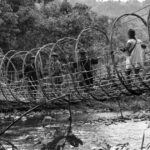
SOURCE: FIRST POST
“Five kilometres more land we have or five kilometres less — this is not important”, the Soviet Union’s premier, Nikita Khurshchev told Mao Zedong at a private meeting in the Chinese leader’s home in the Zhongnanhai, a one-time imperial garden in Beijing. In August, 1959, the People’s Liberation Army had overrun an Assam Rifles outpost in the village of of Longju, claiming the first lives of the simmering China-India border conflict. Khurshchev, to the ire of his host, counselled territorial concessions to India.
“The oak is also firm, but it breaks”, the Soviet premier concluded; weakening Prime Minister Jawaharlal Nehru would lead him into the United States-led camp, and hurt the socialist bloc. The Chinese were having none of it: “our method will be more efficient”, the PLA’s Marshall Chen Yi snorted “yours is time-serving”.
Now, as China and India contemplate the next steps from their disengagement in Galwan, it’s critical for both to understand what happened next: in more senses than one, China lost the 1962 war.
The principles that govern geopolitics are different from the concerns of a Lajpat Nagar property dealer, involving things more significant than the occupation or loss of a few metres of property. Galwan ought to focus the minds of the political leadership in both countries on the actual strategic ends they seek.
Thirty-nine months after the Khrushchev-Mao meeting, the PLA swept aside India’s defences in its north-east and Ladakh, securing land it had claimed since 1960. But, as Khrushchev had warned, the strategic outcomes were less roseate. The war of 1962 pushed India to seek military aid from the United States, which in turn compelled the Soviet Union to seek to deepen its strategic relationship with New Delhi; Nehru began allowing the Central Intelligence Agency to run subversion operations targeting Tibet.
Perhaps most important, in November 1964, Prime Minister Lal Bahadur Shastri authorised theoretical work on the Subterranean Nuclear Explosion for Peaceful Purposes project. For the metaphorical five kilometres of land it won, China ended up with a new—and nuclear-armed—adversary, locked in perpetual confrontation.
Inside five years, the Indian military had modernised enough to demonstrate it could inflict significant costs on the PLA, with troops under the command of Lieutenant-General Sagat Singh—later the hero of Dhaka—inflicting an estimated 340 dead for the loss of 88 of their own, in clashes at Nathu La and Cho La.
That modernisation, ironically, had not a little to do with the ally China had founded its own military rise on, the Soviet Union.
In December, 1962, Yu Zhan, deputy director of China’s department of Soviet and European Affairs, and Nikolai Mesyatsev, the Soviet chargé d’affairs, met at the Embassy of Czechoslovakia to discuss the conflict with India. The ambassadors of Hungary, Poland, and Mongolia, as well as diplomats from North Korea and East Germany, listened as Yu complained bitterly about the Soviet Union building a MiG21 production line in India, on top of the supply of Antonov-12 and Illyushin-14 medium-transport aircraft.
Yu raged, according to declassified Soviet records, accusing Moscow of willingness to “abandon a class stand, betray proletarian internationalism, and betray Leninism”!
“Comrade Yu Zhan, please calm down”, Metsyatev replied. “If the United States wanted to help India build factories, it may have moved complete sets of equipment and factories to India. Is the United States doing so to the benefit of socialism”?
The means nation-states use often seduce leaders, and become ends in themselves. In 1962, China’s means, the PLA, succeeded spectacularly—but failed to deliver any of their intended ends.
This summer’s crisis along the LAC, according to the thoughtful work of scholar Sun Yun, was shaped by two key concerns in Beijing. First, India’s programme of border-defence modernisation has raised concerns in the PLA that New Delhi was seeking to hold territory it had until now only been able to loosely patrol. Thus, having delivered a series of warnings directed at India’s border programme since 2013, the PLA moved to preempt India by pushing its troops as close as possible to the lines it occupied at the end of the war of 1962.
Perhaps more important, Beijing had become increasingly concerned with India’s role in what it perceives as United States-led efforts to contain China’s rise. As former National Security Advisor MK Narayanan has pointed out, the entire architecture of China-India border détente since 1993 was premised on New Delhi’s neutrality in superpower contestation.
The LAC crisis, thus, may been intended to demonstrate the potential costs of taking sides—not just to India, but smaller, and more vulnerable, south-east Asian states.
Neither of these Chinese strategic ends, though, are likely to have been well-served by its means—the placing of military pressure on the LAC. Facing severe financial constraints, New Delhi’s programme of military modernisation has stalled for several years. Leaders, though, will now be under pressure to spend more on defence, an outcome that does not serve China. Moreover, India is likely to seek geopolitical insurance by enmeshing itself more closely in the system of alliances led by the United States, a replay of its behaviour after 1962.
Prime Minister Narendra Modi’s efforts to rid India of the Himalayan millstone around its neck, and secure a border deal, have been spurned by China since 2014. In Beijing’s view, the unresolved border is a useful coercive tool. President Xi Jinping ought be asking himself if the strategic price-tag this tool comes with is worth what it yields.
New Delhi, too, has lessons to learn. The first has to do with developing strategic clarity on what India’s red lines actually are. In the grand scheme of things, it matters little whether Indian troops are stationed on Finger 3 or Finger 6 in Pangong, or if the PLA is 500 metres ahead or behind a point in the Galwan river. Physical occupation of terrain is of ever-diminishing significance: the bridges, airfields and communications hubs of both countries will be obliterated hours into a future war by precision munitions guided by satellite imaging.
India has long hesitated to publish an official map of its claims to the LAC, fearing they will compromise any future territorial negotiation. Ambiguity, though, has favoured the stronger party, as it always does, enabling the PLA to push forward. Is is imperative to state clearly what India believes it is willing to fight to defend.
Poking dragons in the eye, secondly, may be gratifying, but it comes with risks. New Delhi also needs to become more adroit at anticipating—and preparing for—consequences. In Beijing, India’s border roads programme, followed by the activation of the Daulat Beg Oldi airstrip and Union Home Minister Amit Shah’s speech vowing to retake Aksai Chin, were read as threats. Indeed, in military-to-military talks, the PLA has alleged India initiated the confrontation in Galwan, by seeking to build a road and helipad.
Living with a superpower is never easy: more than one Latin American and Middle-Eastern regime, after all, has had the unhappy experience of finding caught in undertow of the United States’ rise. Earlier imperial powers—from United Kingdom to classical Rome—behaved identically.
Each of those empires, though, all had opportunity to learn that in war, strength is no guarantee of victory: the Athenians floundered in Syracuse; the Romans were slaughtered in the Teutoburg Forest; the United States had Vietnam. New Delhi has to systematically develop the capabilities needed to deter aggression—but all the time mindful of the stark asymmetries of power between the adversaries, and the disproportionate costs any crisis will inflict on the weaker one.
For both China and India, Galwan ought be a moment for one overarching realisation: Lessons nations aren’t willing to learn from reflection are usually taught by that most unforgiving teacher, experience.
https://defencenewsofindia.com/how-china-lost-the-1962-war-with-india-and-what-new-delhi-now-needs-to-learn-from-that-defeat/






